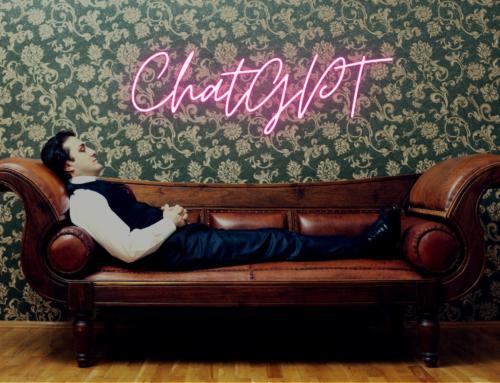What if I told you that one of my biggest challenges (as CEO) was running a company, a few years ago, where no one would leave?
Let me explain.
You see, I had this engineer on my team. Let’s call him Serge.
Serge came to my office and shared the news that he was, sadly, leaving the company. He explained that he had an opportunity he could not pass up at another firm in town. It would pay him more and had cooler technology. He wanted to give it a try.
This meeting was about allowing me to make my case for him to stay. I obliged him and encouraged him to give it serious consideration before leaping.
We lost Serge.
He decided to leave anyway. And, he wasn’t the first.
At the time, we were encountering a wave of departures. It was a tough time for us, as many employees were worried about our long term viability.
(This is something many companies encounter at some point.)
Then a month or so later, I returned from a trip, made my way to my office, passing the engineering pods as I usually did.
And there was Serge!
He was back among his colleagues being his usual fun-loving self.
Huh?
Yeah. Serge wasn’t the first. Several of our team members were doing U-turns and returning home.
Why?
The answer is–somewhere along the way–we created a Magnetic Culture.
We had a “never give up, get things done” attitude–we called it FGID. We went for the “wow” factor in everything. We worked hard but didn’t take ourselves too seriously. We cared deeply for our team members. We enjoyed shared experiences inside and outside of work. We were a driven group fueled by a shared vision. Our core principles included words like team excellence, humility, respect, customer focus, resilience, and innovation.
It wasn’t easy, but we built a place where people felt like a family.
Serge’s reasons for coming back put it well, “John, the tech was cool, the offices were cool, but the culture just was not the same.”
He came back because he felt this is where he belonged.
How do you create a culture like this?
The answer is something I have been studying by looking back at what we did well to keep Serge, my learnings from my recent venture, reading books on culture (listed below), and discussing it with other CEOs.
Below is a simple recipe for creating a Magnetic Culture.
1- Start with the DNA
The founding moments of a startup are like a bunch of stem cells taking form. Core values are the “code” that tells each cell what type of person they will create.
Another way to think about it is: core values define the behavior of your company.
You and I are unique individuals. We are each an elegant combination of a double helix of DNA, environment, personal principles, experience, and passions. Perhaps we have some things in common. Maybe we do not. However, there is no doubt that we each possess traits that make us uniquely suited to any number of business and personal endeavors.
Companies are much the same way. They are a unique combination of DNA, personal principles, experience, passions, and culture–much like people.
This combination is what makes them legendary; or not.
In every company, I have co-founded or led, one of the first things I focused on in describing our ideal DNA. I then turned our attention to creating a blueprint for the company we wanted to make.
My team and I explored questions like:
What type of people do we want here?
What are the core values of our company?
How do we behave?
How do we make decisions?
What are non-negotiables?
We’d answer these questions by looking at the previous companies where we worked and made a list of the good and the bad.
Many founders believe that culture is something that happens organically and shouldn’t be a focus early on.
It’s a fatal mistake.
Because your culture is how your company makes decisions when you’re not there. It’s the set of assumptions your employees use to resolve the problems they face every day. It’s how they behave when no one is looking. If you don’t methodically set your culture, then two-thirds of it will end up being accidental, and the rest will be a mistake, explains Ben Horowitz in his book, What You Do is Who You Are.
Culture documents must be part of a set of foundational documents that every startup develops. They layout the core values of the organization you are hoping to build.
Like people, companies have a personality.
What is the nature of yours?
As Katherine Catlin puts it in Leading at the Speed of Growth, “Core values [and culture] must be based on your own internal beliefs about the right ways to operate to achieve success as a company.”
In my second company–where Serge worked–our initial set of core values included things like hiring the best person in every role, customer centricity, innovation, humility, and continuous improvement. Later, when we had grown to employ over two hundred people, we refreshed it to express an expanded set of beliefs.
I cannot state enough how critical it is to start with core values.
The most successful companies focus on DNA.
“Many [founders] fall into the trap of just letting culture develop on its own. When that happens, the culture can become scattered, negative, chaotic, and unhealthy,” says Katherine Catlin in her book, Leading at the Speed of Growth.
2- Be the Example of Your Values
The first version of our core values and culture statements fit on a single sheet of paper.
In the early days, I would randomly ask an employee to come up during an all-hands meeting to recite a core value from memory and explain what it meant to them.
But, I later realized that approach to inculcation was not nearly as effective as having the team see me live the values.
For instance, whenever I was dealing with a challenging problem, I would bring a team of folks together in a conference room and work on a solution. The idea that “no one is as smart as everyone” was part of our culture, and I exemplified it.
Once, a customer reminded me that we promised to deliver on a specific feature for them. Some time had passed, and we failed to memorialize that promise in our agreements.
It happened to be a tough time for us to deliver on that product feature, and since it wasn’t in writing anywhere, our customer-facing teams were not sure what to do.
The relationship became contentious, and I was asked by my team to help smooth things over.
When I visited their office, the customer explained I gave them a verbal promise, and they expected it to be kept. “If you say that I said that, then it’s done. We will keep our word,” I assured them.
“We do what we promise,” was a core value for us, and I needed to show my team that we meant it. It cost us a lot of money and pain, but it was the right thing to do.
We also believed in open and honest communication, so I made a point of explaining to our customer what happened to get us to this point and the mistakes we made.
When I got back to the office, I shared with our employees why I made this difficult decision.
“It’s who we are, now lets FGID!” (Let’s get it done.)
As a CEO, everyone is looking to you to learn how to act.
Live your values and culture every chance you get.
Because if you can’t be the example, no one can be.
3- Be Vulnerable
During the 2020 coronavirus outbreak, I watched as my mom and two siblings went through the worst time of their lives with COVID19. I sent my sister a text one evening asking how she was. “I am trying to stay alive!” She replied.
My mother–she was 79 at the time–got hit the worst and spent over one month experiencing all that COVID-19 had to offer.
All along the way, I was open with my team.
I sent them daily updates with vivid details of her battle. I also shared how I was doing and how it was affecting my work.
This level of vulnerability and transparency is not easy for most CEOs. Honestly, it took me a long time to get there.
I have always felt I had to be stoic and strong as a leader. I thought I had to keep my struggles to myself.
I never imagined the power of opening myself up and being exposed. It requires trust and that trust is what builds strong teams.
Before the pandemic, I once explained why I failed my team in our recent fundraising process. “I did not do a good job telling our story and targeting the right investors,” I explained. I was honest, open, and raw about it.
The result was a team that came closer and showed their resilience.
I am very open with my team about my strengths and weaknesses. I share how I am desperately trying to learn from my mistakes and improve my decision making.
This behavior may seem counterintuitive for a CEO. After all, we’re supposed to be the strong ones. We should protect our reputation and be the stoic general.
Right? Wrong.
In the context of building a team, trust is the confidence among team members that their peers’ intentions are good, and that there is no reason to be protective or careful around the group. In essence, teammates must get comfortable being vulnerable with one another, says Patrick Lencioni in his seminal book The Five Dysfunctions of a Team.
Teams that don’t trust each other are volatile. They are full of bullsh*t. They fight; they form silos and do not collaborate. They spend their time covering their asses and focus on other own success above the company’s. They point fingers. They keep secrets and build fiefdoms.
It starts with you.
“Group cooperation is created by small, frequently repeated moments of vulnerability. Of these, none carries more power than the moment when a leader signals vulnerability,” expounds Daniel Coyle in The Culture Code.
The paradox is the more you are closed-off, the further away your team will be. The result is a dysfunctional team that becomes a terrible model for the rest of the organization.
The more vulnerable you are–being the example–the more your team will see it as a norm. The norm becomes contagious, triggering an outbreak of vulnerability that permeates the entire company. The result is a foundation that can weather any size earthquake.
The best cultures are fueled by a deep well of trust.
(Btw, one exercise to help develop this vulnerability muscle among your team is a simple almost tribal exercise.)
4- Signal Belonging and Safety
My late co-founder Joe Pilkerton was an exceptional human.
No matter what was happening with the company, he had an uncanny way of knowing when someone needed a hug. He would take the time to connect with each employee in the break rooms to ask them how things were going for them. He showed compassion for people at all times.
He once flew through a hurricane to attend the funeral for the spouse of one of our employees. She died suddenly, and Joe was there to be with the employee and his kids.
In meetings, he would actively seek a person’s opinion who seemed quiet and removed from the conversation.
Joe naturally projected belonging cues.
Belonging cues are behaviors that create safe connections in groups. They include, among others, proximity, eye contact, energy, mimicry, turn-taking, attention, body language, vocal pitch, consistency of emphasis, and whether everyone talks to everyone else in the group. Like any language, belonging cues can’t be reduced to an isolated moment but rather consist of a steady pulse of interactions within a social relationship, deciphers Daniel Coyle.
These interactions made our employees feel psychologically safe. I don’t know if he knew what he was doing. But, he did it instinctively. He was a remarkable person.
Joe had a superhuman ability to signal belonging and safety. I believe this superpower was part of our magnetism.
I wasn’t good at this at first. It was an improvement area for me. I developed a set of processes and forcing functions to take an interest in people on the team.
It evolved into my random walk program. Before I knew it, I was naturally signaling safety and enjoying it. My belonging cues extended beyond the company to customers as well.
5 – Fire Fast
I learned an important lesson in one of my early startups.
Our first head of sales was perfect. He came from the industry. He “walked the walk and talked the talk.”
Or was he?
Within six months, we realized we made a terrible mistake. He did not fit our culture. He seemed to be stuffing the pipeline with deals that were never going to happen. He wore flip flops to meetings that took place on Friday’s. He was not transparent and not very collaborative.
We hired him because he fit the mold. But, what I didn’t understand was he brought with him a lot of cultural baggage.
We eventually asked him to leave the company, but we should have done it sooner.
Developing a DNA-focused hiring process is a must. Once you have your foundation documents and your culture clear, you must hire based on them. It’s imperative.
For each role, create a scorecard that defines those traits that will be key to finding A-players.
In the interview process, ask a series of questions that hone whether this person is a good fit culturally. Have them visit with a group. You might even have a finalist work for the company for two weeks on a project to see how they perform and how they fit with the culture.
This approach will help you prevent mistakes, but it’s not foolproof.
(I found that salespeople are the best at selling themselves during an interview.)
But, the moment you realize you’ve made a mistake, fire fast! Remove cancer, or it will metastasize and kill your culture.
6 – Repeat / Reward / Retard
To instill your values and culture, you have to be clear about the ones you live now and the aspirational ones. Then you have to work day-in and day-out to implement what I like to call the Repeat-Reward-Retard loop.
Repeat
A CEO’s job is never-ending.
You must continuously repeat the core values across all forms of communication. In conversations you have with employees, in messages, you post on the collaboration forums, in your emails, in every meeting using the values as guideposts for making decisions, in your CEO blog or newsletter, and during your all-hands sessions (live or over Zoom).
You will be exhausted. At times you’ll say to yourself, “Why can’t they get it? I just said this.”
It won’t matter.
“What makes for an effective [CEO], especially to a large group, David Gergen [often said] that you need to repeat yourself so often that you get sick of hearing yourself say it. And only then will people begin to internalize the message,” explains Jeff Weiner, former CEO of LinkedIn, on one of my five-star podcasts.
So, when you reach a point of fatigue that is just beginning. When new employees join, it’s your job to put them through the proper onboarding to ensure they understand what you value and your culture.
Remember, when something happens good or bad, you must reinforce the role of your culture in the event.
Reward
Once a year, we awarded the one person who fully exemplified our culture and core values at one of my companies.
The “Founders Award” was taken seriously and gave one person enormous respect from the entire company. It came with a substantial amount of money–something we could afford–and stock options.
Their peers nominated them, and each submission had to make a strong case for why this person personified our core values and culture.
Each quarter we gave “Star Awards” to those teams that help make our wins happen. The company’s leadership identified people, but it was still peer-led.
Each month I sent an update to the company that highlighted examples of people around the company living our values.
Rewarding behavior that fits with the culture shows what is valued.
Retard
Invariably you will find transplanted culture creeping into your environment.
When you start to hire professional managers or leaders, they often bring the bad DNA of their last job with them.
Try your best not to shrug it off.
They will exhibit some of this bad behavior almost subconsciously, thinking it is OK.
When you see it, point it out to them and explain you won’t tolerate it. Encourage the rest of the team to do the same.
For those who can’t adjust and leave their old habits behind, see Fire Fast above. It’s time for them to go.
—
Magnetic Culture requires constant communication, rewards for outstanding performance, and actively discouraging anti-cultural behavior.
7 – Value Diversity
I read about historical figures a lot.
One of my favorites is Genghis Khan because he understood the value of diversity.
To maintain peace in this large and ethnically diverse set of tribes that he had forged into one nation, he quickly proclaimed new laws to suppress the traditional causes of tribal feuding and war. The Great Law of Genghis Khan differed from that of other lawgivers in history. He did not base his law on divine revelation from God; nor did he derive it from an old code of any sedentary civilization. He consolidated it from the customs and traditions of the herding tribes as maintained over centuries, yet he readily abolished old practices when they hindered the functioning of his new society. He allowed groups to follow traditional law in their area, so long as it did not conflict with the Great Law, which functioned as a supreme law or a common- law over everyone.
Genghis valued the power of diversity to unite a society and make it stronger. He combined customs, science, technology, and unique perspectives to create a greater extended whole.
Creating a magnetic culture is accelerated by diversity.
The world is incredibly diverse. Our companies should resemble that mosaic, plain and simple.
Fill your team with diverse backgrounds– ethnically, experiences, professions, and sexes. It will create a place where people feel inclusion.
Bill Campbell, the legendary coach, believed, “You don’t want to staff a team with just quarterbacks; you need to pay a lot of attention to the team composition and have a diverse set of different talents smartly woven together.”
Creating a Magnetic Culture is not easy. It’s hard.
It starts with you, the CEO.
Wherever your center lies, know it, name it, stick to it, and believe in it. Everyone who works with you will know what matters to you and respect and appreciate your unwavering values. Your inner beliefs about business will guide you through the tough times, says Danny Meyer, the CEO of Union Square Hospitality Group.
That’s why when Peter Thiel, founder of Paypal and Palantir, invested $150 million in AirBnB, his sharp piece of advice to the founder and CEO was “don’t f*ck up the culture.”
By upholding our core values in everything we do. Culture is a thousand things a thousand times. It’s living the core values when you hire; when you write an email; when you are working on a project; when you are walking in the hall, We have the power, by living the values, to build the culture. We also have the power, by breaking the values, to fuck up the culture. Each one of us has this opportunity, this burden, exalted Brian Chesky in a letter to his employees inspired by Thiel’s advice.
The culture of a company can easily make or break it.
Focus on making yours magnetic.
More Articles from the Tribe Vibes Series can be found HERE.
The Magnetic Culture Booklist:
- Who You Are Is What You Do by Ben Horowitz
- The Culture Code: The Secrets of Highly Successful Groups by Daniel Coyle
- Powerful: Building a Culture of Freedom and Responsibility by Patty McCord
- Setting the Table by Danny Meyer
- The Five Dysfunctions of a Team: A Leadership Fable by Patrick Lencioni
- The Advantage: Why Organizational Health Trumps Everything Else in Business by Patrick Lencioni
- Ghengis Khan and the Making of the Modern World by Jack Weatherford



